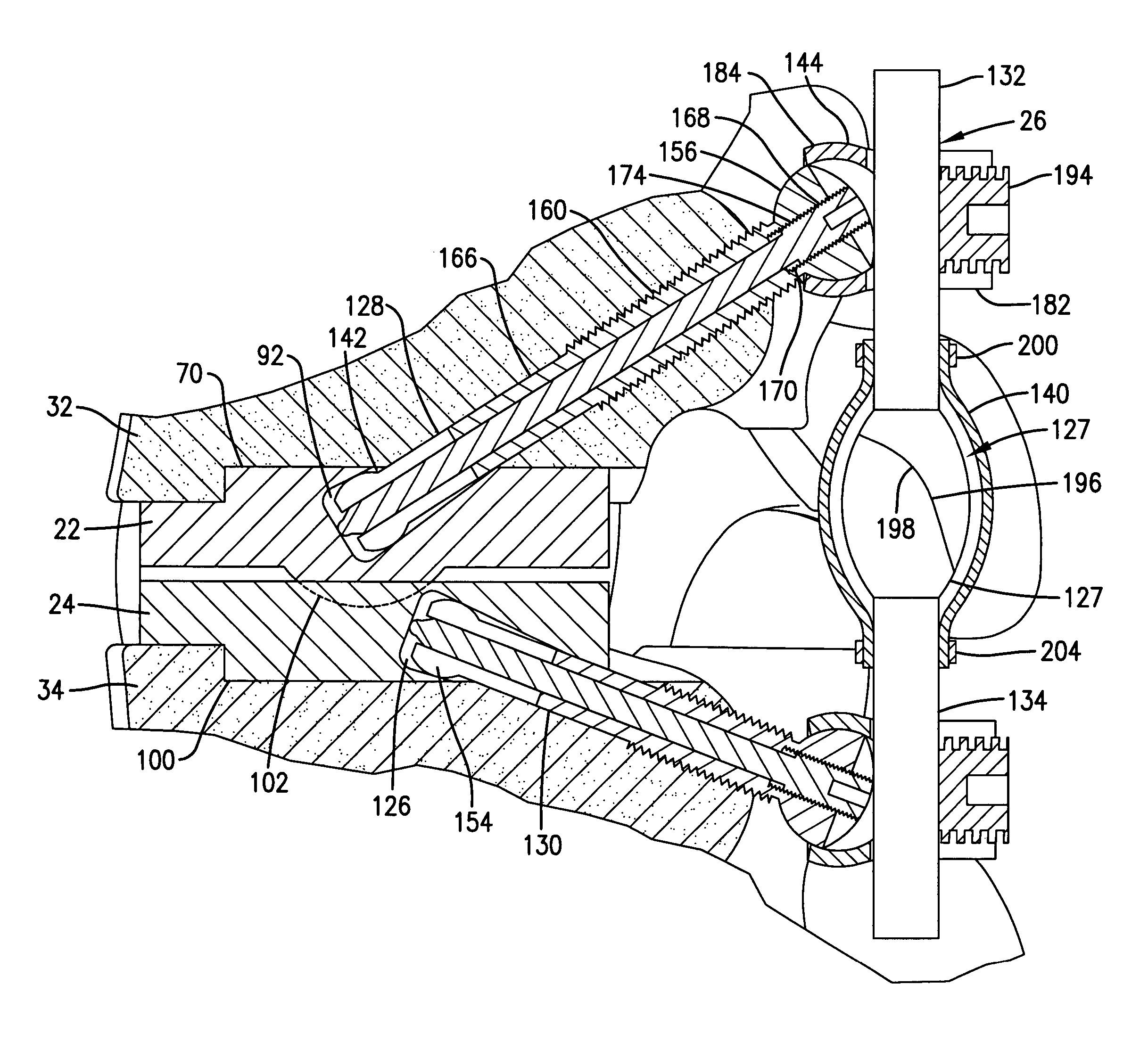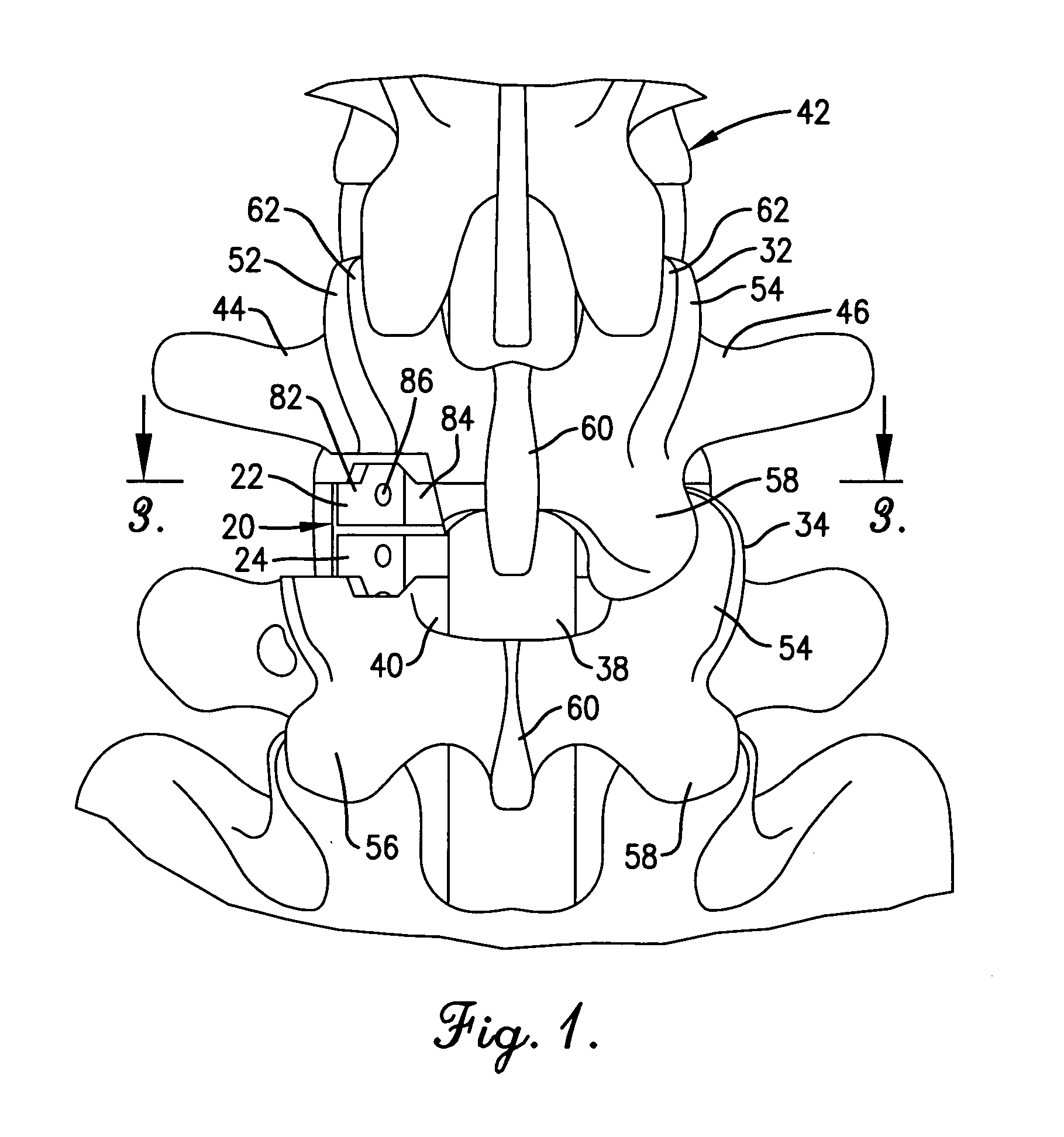Artificial spinal disc, insertion tool, and method of insertion
a technology of artificial discs and insertion tools, applied in the field of artificial discs, insertion tools, and methods of insertion, can solve the problems of limiting the flexibility of the spine, affecting the treatment of patients with active lifestyle, and significant pain and potential nerve damage, so as to reduce the risk, reduce the pain experienced by patients, and restore the original range of motion of the spin
- Summary
- Abstract
- Description
- Claims
- Application Information
AI Technical Summary
Benefits of technology
Problems solved by technology
Method used
Image
Examples
Embodiment Construction
[0032] Referring now to the drawings, an artificial spinal disc 20 in accordance with the present invention is shown in FIGS. 9 and 12 and broadly includes first plate member 22 and second plate member 24 with a connecting outrigger 26. The invention further includes a tool 28 used in drilling channels for receiving the outrigger 26, and a spacer tool 30. The artificial spinal disc 20 is designed for use between adjacent first vertebra 32 and second vertebra 34. As used herein, the terms “first vertebra” and “second vertebra” are used merely as a references to distinguish between two adjacent, superior and inferior vertebra, and not in the medical sense as in “sixth cervical vertebra.” As seen in FIGS. 1, 2 and 3 for example, each of the vertebrae 32 and 34 present a vertebral foramen 36 for receiving therein the spinal cord 38, a body 40 which provides a weight bearing capacity for the spinal column 42, left and right pedicles 44 and 46, left and right transverse processes 48 and 5...
PUM
 Login to View More
Login to View More Abstract
Description
Claims
Application Information
 Login to View More
Login to View More - R&D
- Intellectual Property
- Life Sciences
- Materials
- Tech Scout
- Unparalleled Data Quality
- Higher Quality Content
- 60% Fewer Hallucinations
Browse by: Latest US Patents, China's latest patents, Technical Efficacy Thesaurus, Application Domain, Technology Topic, Popular Technical Reports.
© 2025 PatSnap. All rights reserved.Legal|Privacy policy|Modern Slavery Act Transparency Statement|Sitemap|About US| Contact US: help@patsnap.com



